- Padel Business Magazine
- Posts
- PBM Insight Report: Padel operators in UK and US face battles over court build and installation as sport expands
PBM Insight Report: Padel operators in UK and US face battles over court build and installation as sport expands
Cutting edge: Player safety concerns have sparked renewed discussion about the importance of the quality of padel courts and their installation.
With padel growing rapidly in the UK and US, the surge in demand for courts is leading to significant challenges as well as opportunities for operators around issues such as court installation, maintenance and after sales service. While many operators are finding ways to tackle the difficulties, there are growing calls for more attention to be given to these key growth markets by court suppliers. At the same time, court manufacturers are developing a growing range of innovations as they seek to gain an edge in the expanding global market. Special report by Jonathan Dyson and Laura Syrett.
With padel now being played on over 70,000 courts across the world, according to the latest figures from the International Padel Federation (FIP), released in March, the quality, durability and features of those courts are coming under ever closer scrutiny as the sport evolves.
A photo of ex-Barcelona footballer Carles Puyol with blood on his arms and legs after colliding with the back glass at a padel court during a game a few years ago was highlighted last month in a LinkedIn post by Jeevan Gill, the COO of UK operator PadelStars.
“Building cheap courts is a big mistake,” she wrote. “It’s dangerous for players and damaging for operators.
“Recently I’ve seen so many other videos of glass smashing at padel courts. This should never happen, regardless of a player's weight or the speed of collision. More often than not, this happens because of a poor quality build.”
As potential causes of the back glass smashing, she pointed to uneven groundworks, glass thickness and poor quality platforms.
“We’ve taken a great deal of care in sourcing trusted court manufacturers,” she added. “We import our courts from a supplier in Spain. We’ve educated our design and build partners on padel groundworks. We thoroughly vet any overseas suppliers via in-person factory visits and meets. Player safety and building quality facilities are always our priorities.”
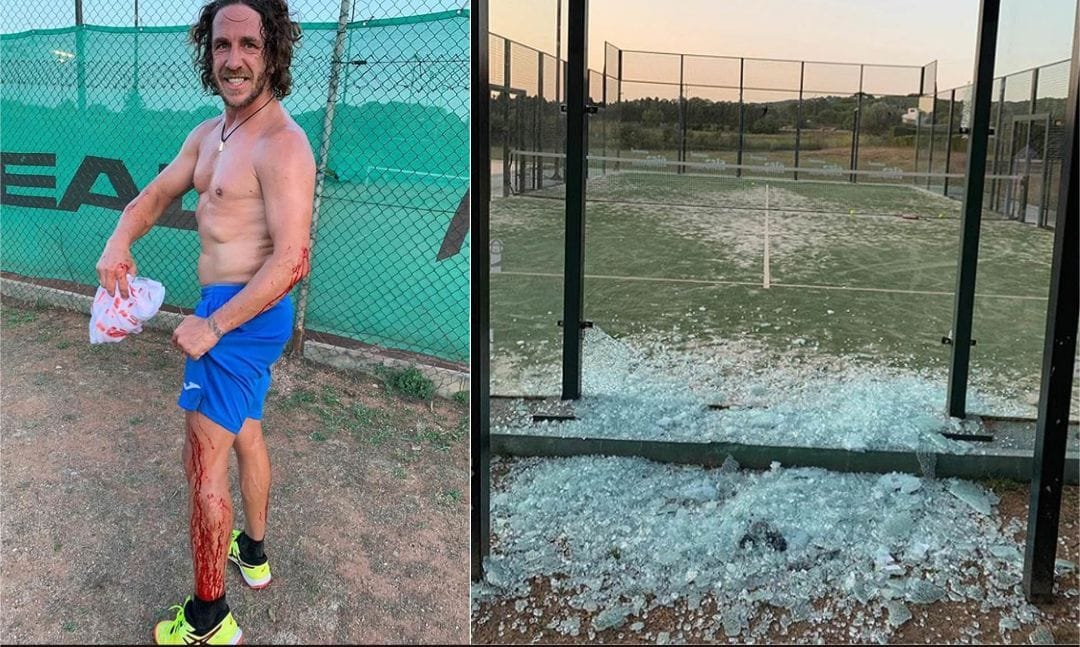
Ex-Barcelona footballer Carles Puyol with blood on his arms and legs after colliding with the back glass at a padel court in 2019. Image credit: LinkedIn.
Vital that installation is done correctly
PadelStars currently has eight venues in the UK, with four more due to open in the next five months, which will bring its capacity to 43 courts.
The company’s CEO, Andy Knee, tells Padel Business Magazine that while there is often little differentiation between courts offered by suppliers in Europe, it is vital that installation is done correctly.
“Some courts are better than others, with greater quality, attention to detail, durability and to some extent innovation,” he says. “But the differences in the European manufacturers are largely marginal.”
He adds that installation is “definitely important,” noting that “poor installation leads to a poor playing experience no matter who has manufactured it. You need a good quality court and a professional installation.”
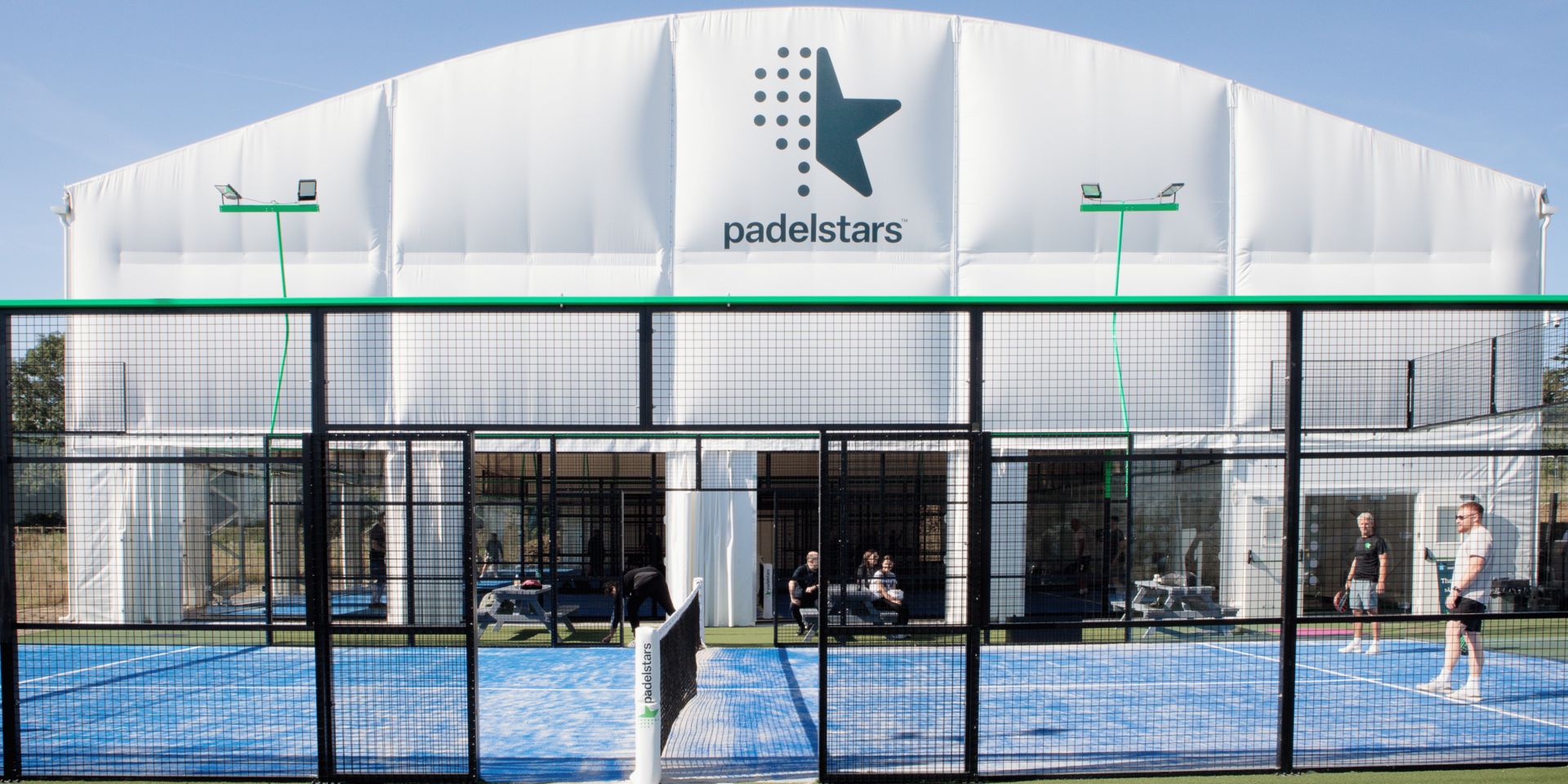
PadelStars currently has eight venues in the UK. Image credit: PadelStars.
Waseem Khan, director of Salus Padel, which runs padel sites across the north of England, agrees, noting that while much of the innovation in padel court design is helping to market the sport, enhance playability and adapt to industry and even climate requirements, it is important not to lose sight of the basics in favour of exciting new court attributes.
"Installation is just as critical as design,” he explains. “Even the best-designed courts can underperform if they have been poorly installed. One example is poor foundation quality, such as low-grade concrete or inadequate soil compaction, as this can lead to cracks and an uneven surface. Another example is the drainage and slope. Without a proper slope (1-2%) and drainage, courts can flood or degrade easily.”
Getting what you pay for
Padel court installation is a major investment. According to London-based consultancy Padel Consulting’s 2025 market trends report, building a padel court in the UK costs around £45,000-£75,000 (US$60,700-US$101,200) for outdoor courts and £70,000-85,000 (US$94,500-US$114,700) for indoor courts.
Alessandro Corti, co-founder and CEO of Padel Consulting, thinks the amount buyers spend on courts does make a difference as injuries are “a real problem of cheap padel courts”.
He adds: “In this sector, safety and durability are crucial factors, but not everybody cares. When we looked out for the best [court] manufacturers (and not resellers), the glass’ resistance has been a crucial factor [in decisions].”
PadelStars’ Knee agrees that “you get what you pay for” when it comes to courts. “It matters to players as soon as they move beyond the beginner stage,” he says. “There is an ROI [return on investment] by spending more – the courts will enjoy great demand and last longer.”
Court suppliers are eager to differentiate themselves through innovative designs and special features. These can include, for instance, LED scoring displays and video playback facilities. But these can all inflate costs.
However, Khan stresses that the price of a court is not necessarily an indicator of performance.
“A good court isn’t always about how much you pay, you have to be comfortable that the padel supplier and installers are experienced and have a track record,” he says.
“Some padel courts can be significantly better than others. This can be impacted by the flooring used, and the way the floodlights are fitted can greatly impact the gameplay quality. You’ve then also got to factor in the durability and safety of the courts with the materials used.”
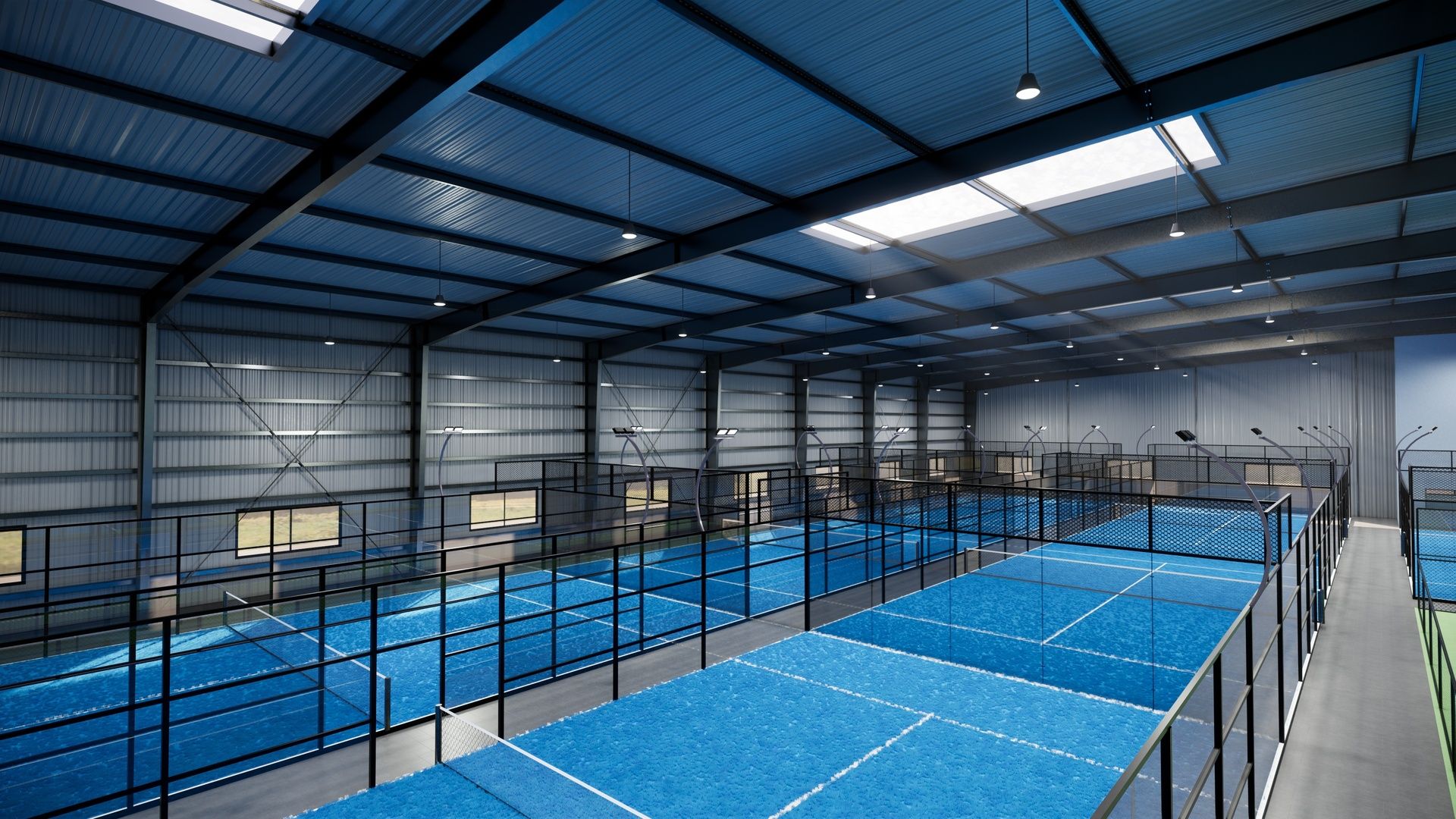
The price of a court is not necessarily an indicator of performance. Image credit: Adobe Stock.
Importance of after sales service for padel operators
Morten Bugge, owner of Rocket Padel, which has 35 courts across four venues in the UK, stresses that a reliable after sales service from court suppliers is also essential.
“It's important when clubs are buying courts that as well as the price, they agree on the after sales service, to make sure the manufacturers maintain the courts and make any adjustments in the months afterwards, so you know everything is done to make them last longer and for there to be a better and safer playing experience,” he tells Padel Business Magazine.
Bugge warns that “if the manufacturer doesn't assemble the courts correctly, there is a risk of glass breaking, or a player getting stuck in the fence and cutting themselves”.
He adds that in the absence of a national association for padel clubs in the UK and indeed many other countries that could put pressure on court suppliers, “each club should just keep pushing for the after sales service and ensure it’s in their contracts”.
The courts at all Rocket Padel’s UK clubs are made by the Spanish company Portico Sport. Bugge reveals they are installed by Rocket Padel itself, with a UK-based specialist company.
“We install the courts ourselves, because we've done it so many times now and been involved in the process so we know exactly how it should be done and where to make ongoing adjustments,” he explains.
Bugge notes that once courts have been installed, for court manufacturers who adopt a fly in, fly out approach, as well as appreciating the importance of after sales service, “increasingly they also understand that this works as a sales window for them to sell even more courts”.
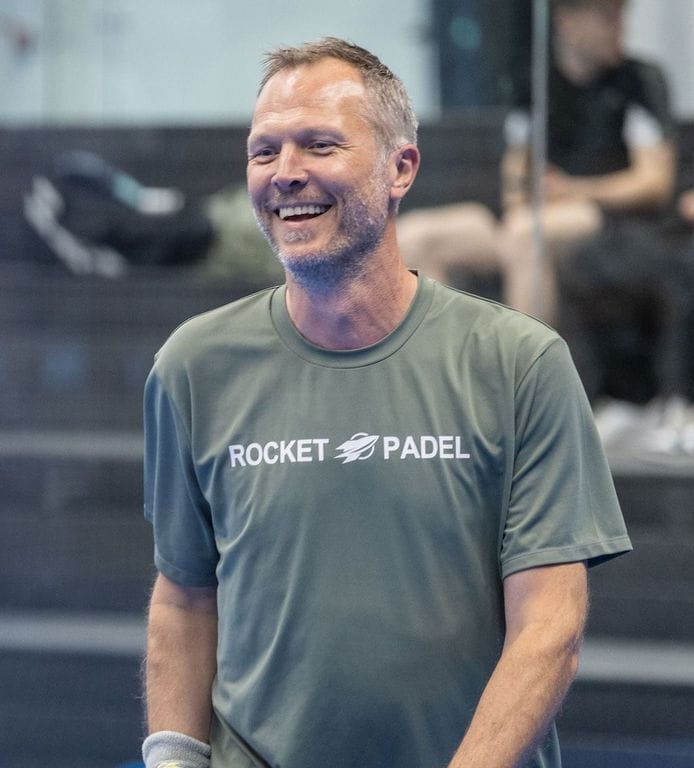
Morten Bugge, owner of Rocket Padel, which has 35 courts across four venues in the UK. Image credit: Rocket Padel.
Call for top court manufacturers to have presence in UK
Nevertheless, Bugge observes that for padel markets like the UK that lie outside of the main court manufacturing hubs such as Spain, it often remains a challenge for operators to ensure the courts are maintained and any issues dealt with swiftly.
He therefore hopes that in time some of the leading court manufacturers will have operations in the UK.
“I think everyone has woken up and seen that the UK will be the biggest growth market for padel in the coming years,” he says. “So I hope that the court producers will also start prioritising putting the right people on the ground, so all the clubs get the best possible service.”
Bugge says that while Rocket Padel focuses heavily on using high-quality courts and delivering a premium experience, the overriding focus for many players in the UK is still simply securing access to a court.
He notes that the UK market is at a different level of maturity compared with Denmark, for instance, where Rocket Padel has 36 courts across four clubs, all of which are made by another leading Spanish manufacturer, Padel Galis.
“Denmark is in a different place,” he observes. “In the UK we decided to go premium, but you could actually get away with much less for now, as players don't yet place a strong emphasis on the playing experience. Their main focus remains on court availability.”
He adds: “Again it’s a lot to do with maintenance and the after sales service of the court. For most padel players in the UK, if you asked them how they feel about the glass, they would not think about it. But in Denmark if you don't wash the glass every week, you get complaints at the clubs.”
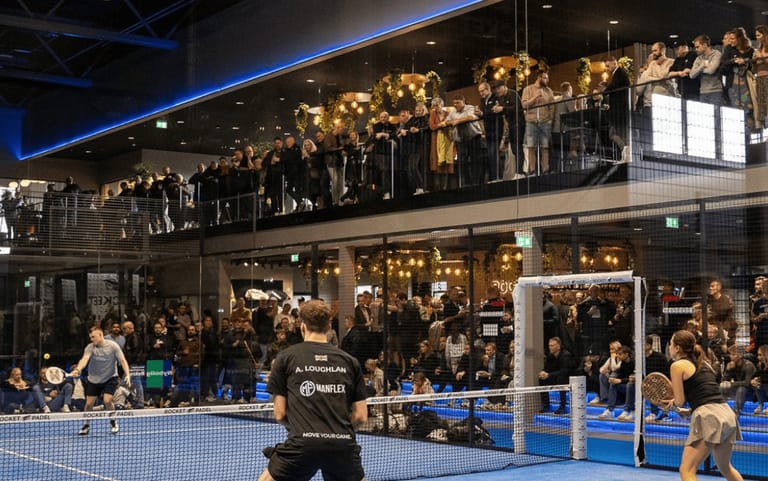
Rocket Padel’s club in Esbjerg, Denmark, which has nine courts. Image credit: Rocket Padel.
US padel clubs face numerous challenges with court suppliers
In the US, another key growth market for padel, the opportunities and challenges around padel courts are in many ways similar to those in the UK.
Tim Bainton, chief operating officer and partner of the padel owner/operator and investment company Epic Padel, observes that as it seeks to capitalise on the growing demand for courts the priority for much of the industry across the States at present is simply opening up facilities.
While Epic Padel ensures it uses high-quality courts from Europe, he notes that for the sector in general, “the quality of the court, unfortunately, right now, is not even the focus - it's having courts in the first place. Then beyond that, it's [which court supplier] you're working with”.
However, he believes that as its padel industry develops, it will be vital for the US to have its own court manufacturers.
Epic Padel has plans to open 100 new courts across North America by the end of 2026. Its first club in Charlotte, North Carolina, which opened in September 2025, has five courts, with new venues due to open in Milwaukee, Utah and Tysons Corner, Virginia, by February 2026.
Bainton notes that sourcing courts from Europe at present can bring with it several challenges, including extra costs due to tariffs as well as installation issues and delays.
He observes that court suppliers selling into the US will often hire local crews, who he says “don't necessarily really know the ins and outs of a padel court. They're just kind of day labourers, which can lead to inconsistencies in how the product is executed”.
“The faster we have distribution and manufacturing [of courts] in the US the better,” he stresses.
“If you're investing in the US, why would you deal with all of those issues? It just doesn't make any sense. It's not anything against them. It's just not good business. So manufacturing in the US, and distribution in the US, in that order is critical for growth.”
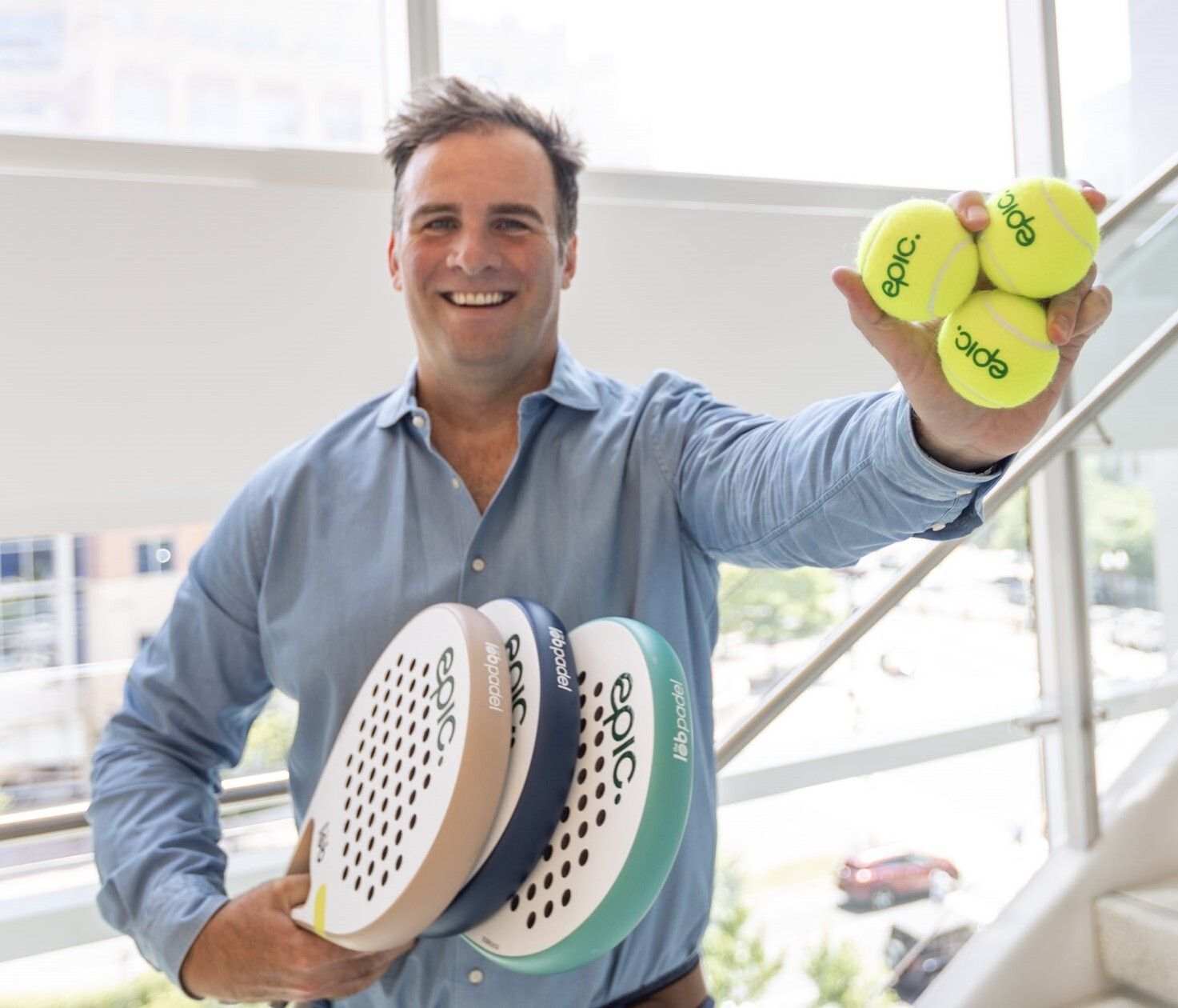
Tim Bainton, chief operating officer and partner of the padel owner/operator and investment company Epic Padel. Image credit: Epic Padel.
Overcharging and failing to meet US standards
Bainton also suggests that many court manufacturers from Europe and elsewhere are overcharging operators in the US as padel takes off in the country, though he believes this will change over time.
“I think there are a lot of international manufacturers that are price gouging US owners and operators, because they are the only people in the market,” he says. “We have no choice now, but like with anything else, as more players come online, and the prices will come down, the choices will become better.”
However, he believes that international court suppliers have some way to go before they can live up to the expectations of doing business in the US.
“At the moment we're at the behest of whatever they want to charge and tell us and what they think about standards,” he says. “I've noticed that the standards we have here in the US are significantly higher than what they are bringing to us.
“So that's going to hit a wall where we have manufacturing and distribution in the US, or those in Europe or elsewhere, they have to rise to our standards here in North America of what we expect with regards to customer service, delivery, installation and follow-up.”
Despite his concerns, Bainton says he is optimistic that such issues can be resolved as the industry develops.
“This is not about pointing fingers,” he emphasises. “This is a new business. So whenever you have a new entity that's in a different space without any competition, then your hands are tied.
“Court manufacturing will become more competitive and by that the standards will raise, and also the prices will become more competitive. So it's really a growing pain of being one of the first operators in this space.
“We're trying this for the first time as well, so we're also learning, understanding what we need, what we want, what we expect. It's a new ecosystem in the US where everyone is trying to figure out their roles. It's just part of the process of growth.”
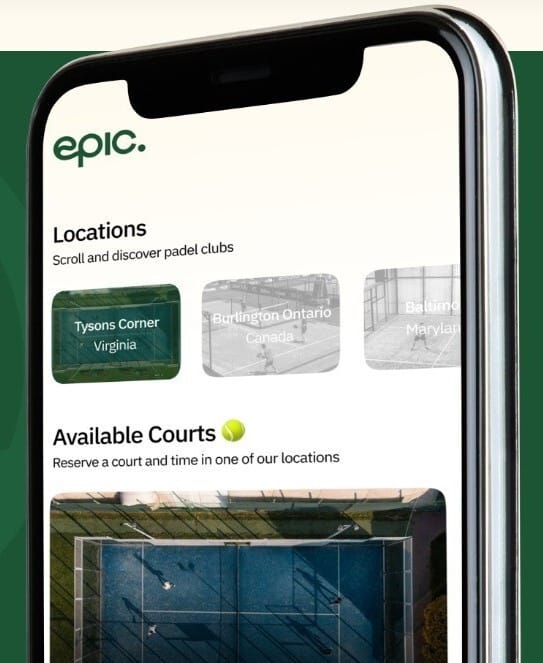
Epic Padel has plans to open 100 new courts across North America by the end of 2026. Image credit: Epic Padel.
Court manufacturers seek innovations to create an edge
As court suppliers look to keep their growing number of customers happy across the ever-expanding range of padel markets globally, they are also looking for innovations that might give them an edge in a sport that restricts the ability to vary services, because of its need to promote standardisation.
The rapid growth of padel in recent years has resulted in a boom in the number of businesses that design, manufacture and install padel courts.
Ian Colligon, director of iPadel, an independent consultancy service based in Surrey in the south of England that advises on everything from the cost of courts and planning considerations to the suitability of different courts for various locations and clients, believes that in general differences between court designs are “mostly visual”, rather than functional.
However, court manufacturers argue that many of the new features their courts offer are performance-enhancing and player-centric.
FIP sets comprehensive guidelines for court construction to ensure consistency and safety across professional facilities. These regulations cover everything from precise measurements – a padel court is defined by FIP as an area 20 metres long and 10 metres wide enclosed above ground – to material specifications for court walls, posts and playing surfaces, and rules on where lighting can be situated.
Within these strict parameters, innovation is happening in areas such as how courts are put together, lit and sound-proofed, and the integration of smart technology.
Experimenting with mobile court designs
Salus Padel’s Khan notes that many padel court suppliers are developing alternatives to static courts and experimenting with mobile court designs.
“Modular and portable courts are becoming increasingly popular, especially for events or temporary venues,” he says.
iPadel’s Colligon also points to a trend towards courts on “adjustable legs, which negates the need for groundworks”.
An example of this is the FlexiPadel range of courts offered by Padel Galis. Mounted on short legs, FlexiPadel courts can be installed on rooftops, beaches, or uneven ground and can be easily assembled and dismantled for use in different locations.
Juan Larraz, CEO of Padel Galis, tells Padel Business Magazine that the FlexiPadel courts have a self-levelling platform that “[helps] clients find installation solutions” in places where having a permanent padel court might otherwise be difficult or impossible due to the need for civil works or permits.
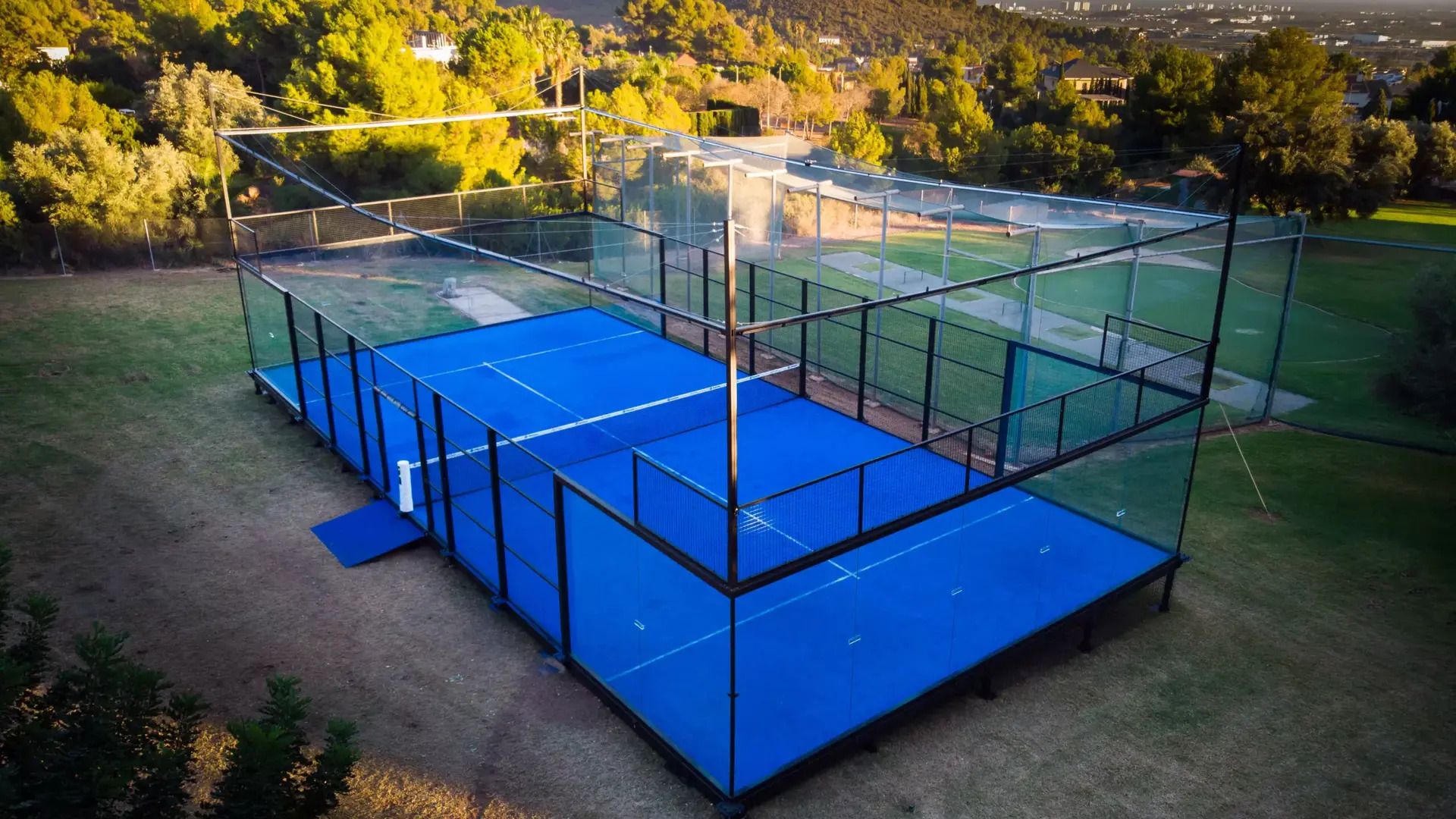
The FlexiPadel range of courts from Padel Galis can be easily assembled and dismantled for use in different locations. Image credit: Padel Galis.
Other court suppliers are also responding to the demand for ‘pop-up’ courts. In May 2025, Barcelona-based AFP Courts, which has been designing and manufacturing courts for 18 years, unveiled its adidas PPL High Competition 2025 court at the Padel World Summit in Barcelona.
Designed and manufactured exclusively as the official court of the Pro Padel League (PPL) - North America's first professional padel league (with teams from the USA, Mexico and Canada) - the court features a 'Try & Buy' portable system designed to reduce court installation and takedown times.
“This is essential for a league like the PPL, where tournaments are hosted in multiple arenas and outdoor venues across different cities,” Cher Duval, AFP Court’s digital marketing and communications manager, tells Padel Business Magazine.
“This flexibility ensures the court delivers professional standards wherever the competition takes place, without compromising on quality or reliability.”
A further innovation from AFP Courts in response to demand for movable courts is its Insert Fixation System (IFS), which separates the court’s anchor plates and pillars, as opposed to these components being fixed in a solid structure, making it simpler to transport, install and maintain the courts.
“[IFS] also allows for easier customisation of courts,” says Duval, noting that customisation options, such as turf colours and tournament-branded logos, are highly valued by tournament organisers as these help create a distinctive stage for competitions.
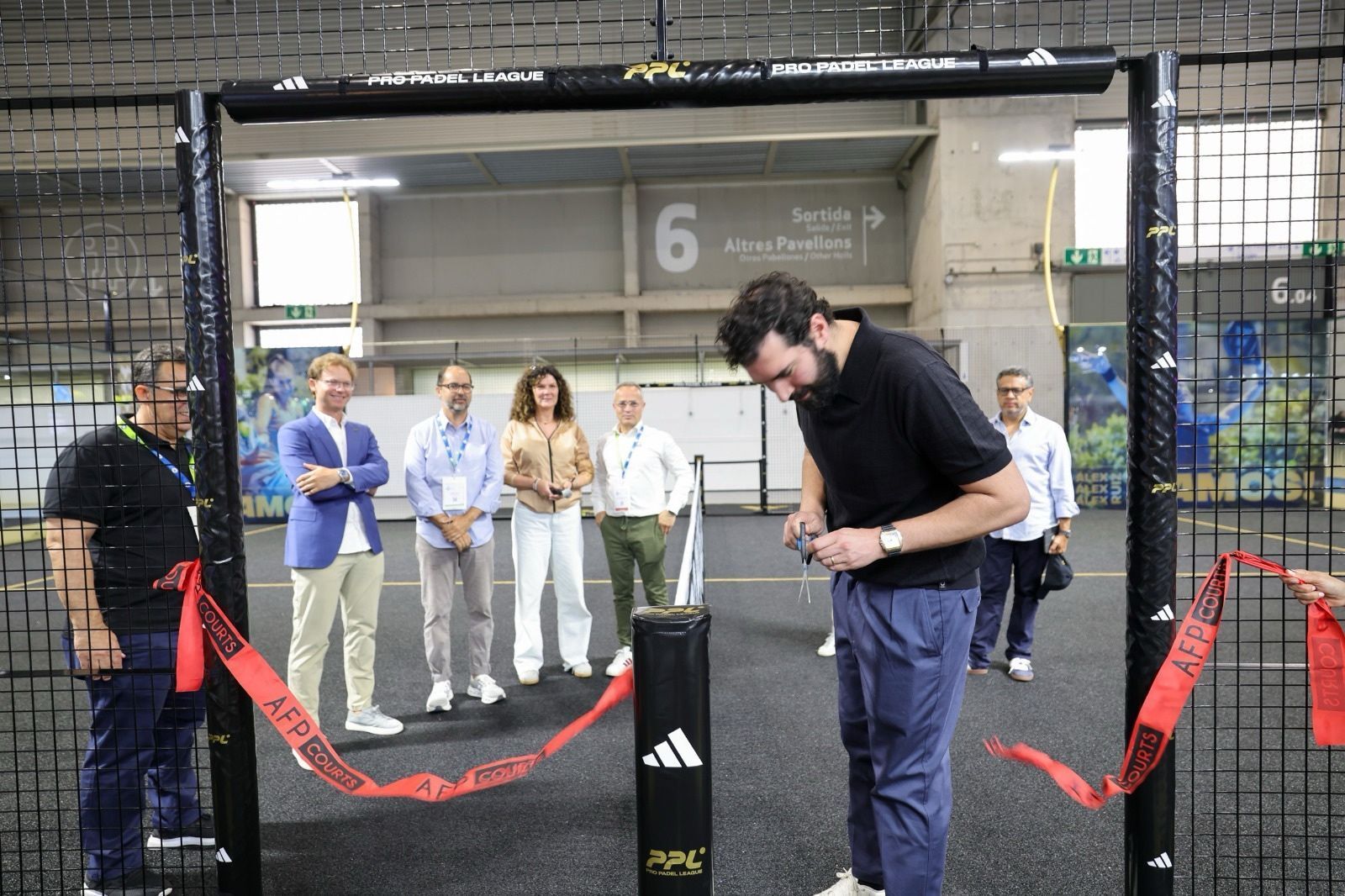
AFP Courts unveiled its adidas PPL High Competition 2025 court at the Padel World Summit in Barcelona in May 2025. Image credit: Padel World Summit.
Innovations in court lighting
Court lighting is another key area for innovation among padel court suppliers, as both indoor and outdoor courts need to be well-lit without presenting obstacles to players or spectators.
Padel Galis’ Larraz says his company is focusing on developing increasingly advanced perimetral lighting systems that illuminate the perimeter of the court.
Padel Galis first launched perimetral lights in 2023 as a feature of its PPA court, developed in partnership with the Madrid-based international Professional Padel Association (PPA), which represents players from around the world.
The court is designed to provide optimal visibility, with more uniform light distribution across the playing surface compared to other kinds of raised lighting that can create shadows that distract players, while also reducing lighting-based energy consumption by up to 50%.
Others have taken a different approach to lighting. Alfonso De Barutell, co-CEO and co-founder of Madrid-based court builder Padel Lab, tells Padel Business Magazine his company has circumvented the lighting obstacle problem by repositioning the lighting poles via its TPL PRO, which uses specially positioned, right-angled lighting poles that hold the lights high above the court in line with the walls.
“Traditional ‘broken' or 'curved' poles still sit close enough to the court that the ball often strikes them during play, even in professional tournaments,” he says.
“We redesigned the system so that lighting poles sit completely outside the playing area, making interference impossible. This guarantees a fairer game, a better spectacle for spectators, and fewer controversial interruptions during tournaments.”
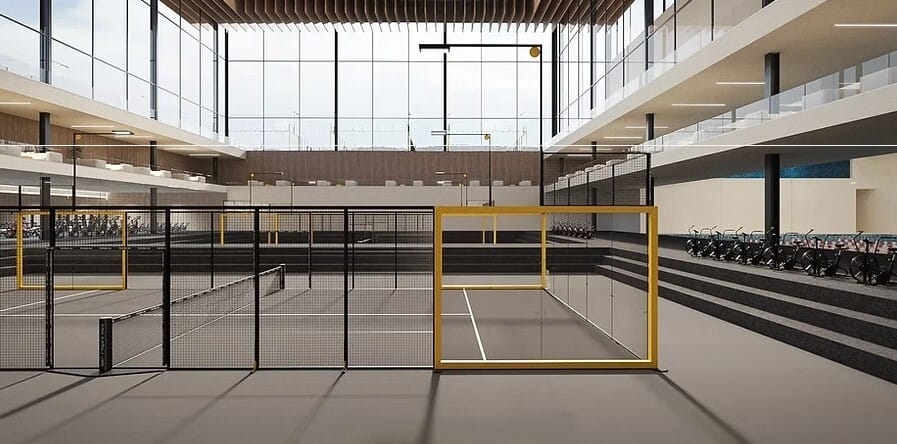
Padel Lab’s TPL PRO innovation uses specially positioned, right-angled lighting poles that hold the lights high above the court in line with the walls. Image credit: Padel Lab.
Anti-injury system
Padel Lab has also implemented an anti-injury system in its courts. One innovation is that it fixes the hard metal mesh surrounding part of the court into upright steel supports, rather than being welded onto the outside or clad in steel plate, both of which risk accidents from sharp edges and protrusions.
De Barutell says this internally fixed mesh also has performance benefits, as it reduces irregular bounces and promotes a uniform rebound around the mesh section of the court walls.
Smart technology integration, where courts are fitted with sensors for player tracking and coaching to review post-match, is also a growing trend in padel court design.
For instance, in May 2025, another Spanish company, Valladolid-based Padel Smart Courts (PSC), launched what it claimed to be the “world's first smart padel court”.
Available in five versions, each equipped with features such as recording systems, advanced sensors, LED lighting, integrated smart speakers and interactive displays, PSC’s courts also allow players to keep track of scores by linking the pitch to their smartwatches.
Meanwhile, companies such as Boston, US-based smart court technology developer PlaySight offer artificial intelligence (AI)-based software (called SmartCourt AI) that automatically tracks padel players and the ball, analysing their position speed and performance and allowing them to produce coaching videos available immediately after the match.
In August 2025, PlaySight announced an expanded partnership with US padel club operator Padel Haus to install a sports video platform at a further five of Padel Haus’ sites, following a successful trial at its flagship Dumbo facility in Brooklyn, New York.
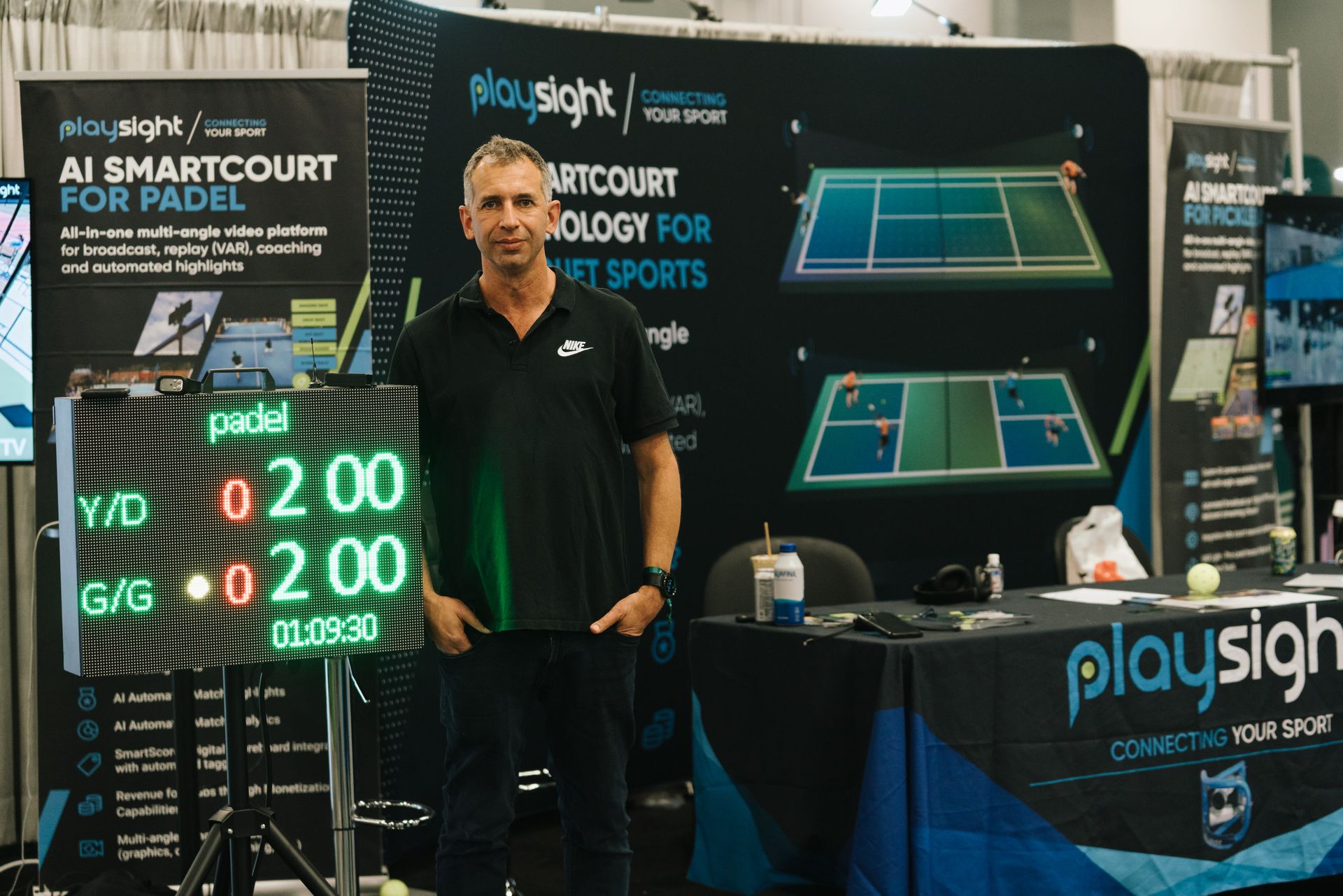
A display of PlaySight technology for padel at RacquetX 2025, held on 22-24 March in Miami. Image credit: PlaySight.
Tackling noise pollution
Another source of innovation for padel court suppliers is tackling issues around the noise caused by the sport.
Noise complaints about padel courts have sparked legal battles in the US, planning disputes in the UK, and community discord in the Netherlands and Hungary, among other places.
One of the biggest challenges for court designers in the UK has been putting forward court designs that will be acceptable to court neighbours and local authorities.
Gaining planning permission for new padel courts is “a big problem”, according to Colligon, with light and height issues also featuring among the objections to new courts.
As a result, companies including London-based building materials company Mobilane and Alicante, Spain-based court installer Padel Alba have launched ranges of acoustic screens made from materials including metal or wood, according to customer preference, which they say significantly reduce the sound emanating from padel games.
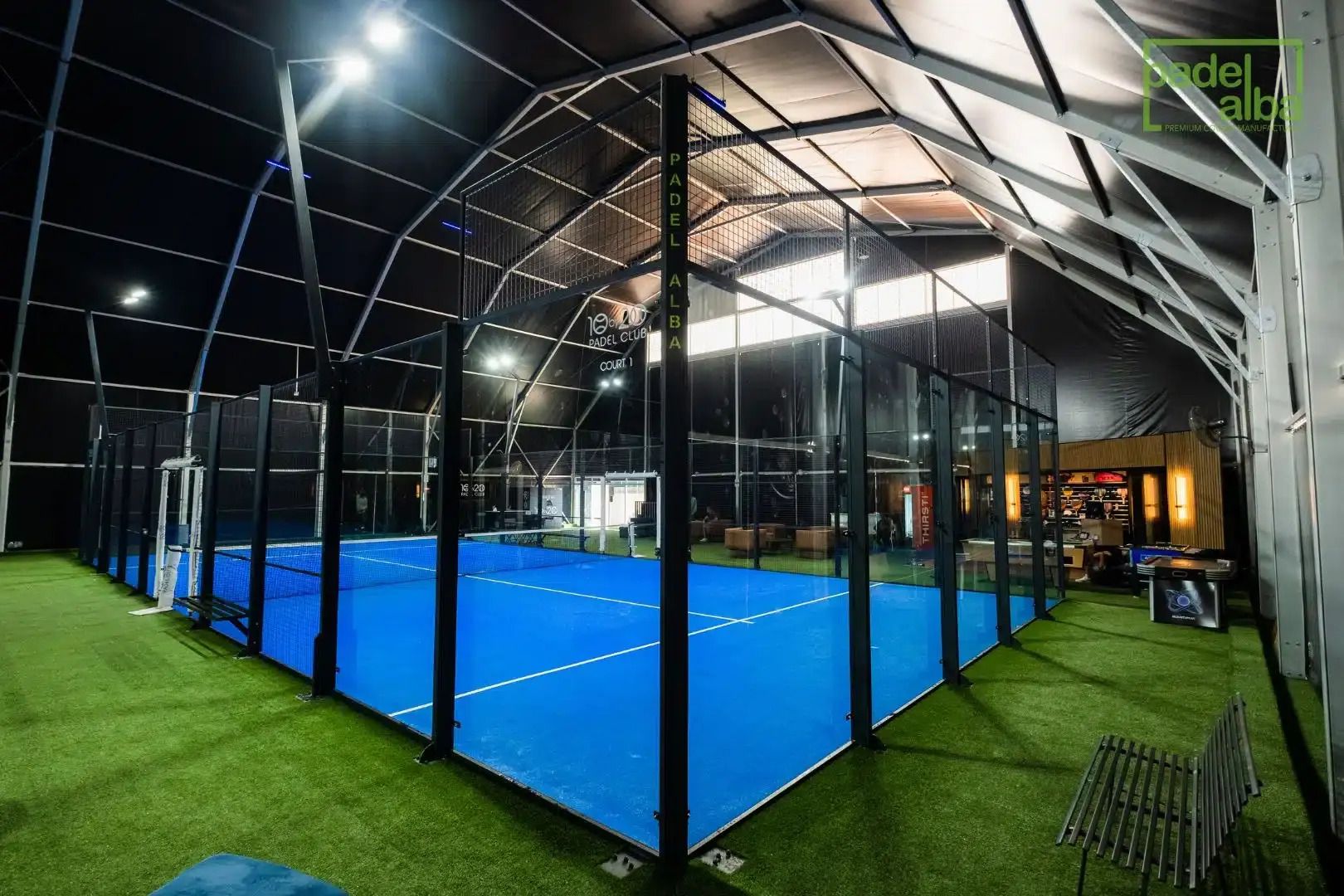
Padel Alba has launched a range of acoustic screens designed to significantly reduce the sound emanating from padel games. Image credit: Padel Alba.
Dealing with the effects of climate change
In addition to focusing on improvements in the aesthetic, playability and safety characteristics of padel courts, designers and manufacturers are having to innovate to ensure their courts can withstand the far less predictable demands of climate change, which especially impacts outdoor padel courts.
“Climate change is increasingly shaping the environments where padel is played, both indoors and outdoors,” AFP Courts’ Duval says. “Rising humidity levels, stronger winds, and higher solar radiation are no longer occasional factors but structural challenges that court designers must address,” she adds.
For outdoor settings, solar radiation is an area of ongoing research by padel court designers, with new construction materials being developed to absorb heat and protect from the sun more effectively. “[For example], UV-stable synthetic turf is a material that has been designed to maintain performance in sunnier climates,” says Salus Padel’s Khan.
In hurricane-prone regions such as the US, wind speed resistance compliance is also critical.
“AFP Courts offers reinforced solutions such as the ‘adidas 87 MPH’, ‘adidas 105 MPH’, and ‘adidas 165 MPH’ courts, each designed for specific wind load zones, supported by case-by-case structural calculations in line with local regulations and international codes,” says Duval. adidas has been the official partner of the PPL since 2022 and AFP Courts is the official court supplier to the PPL.
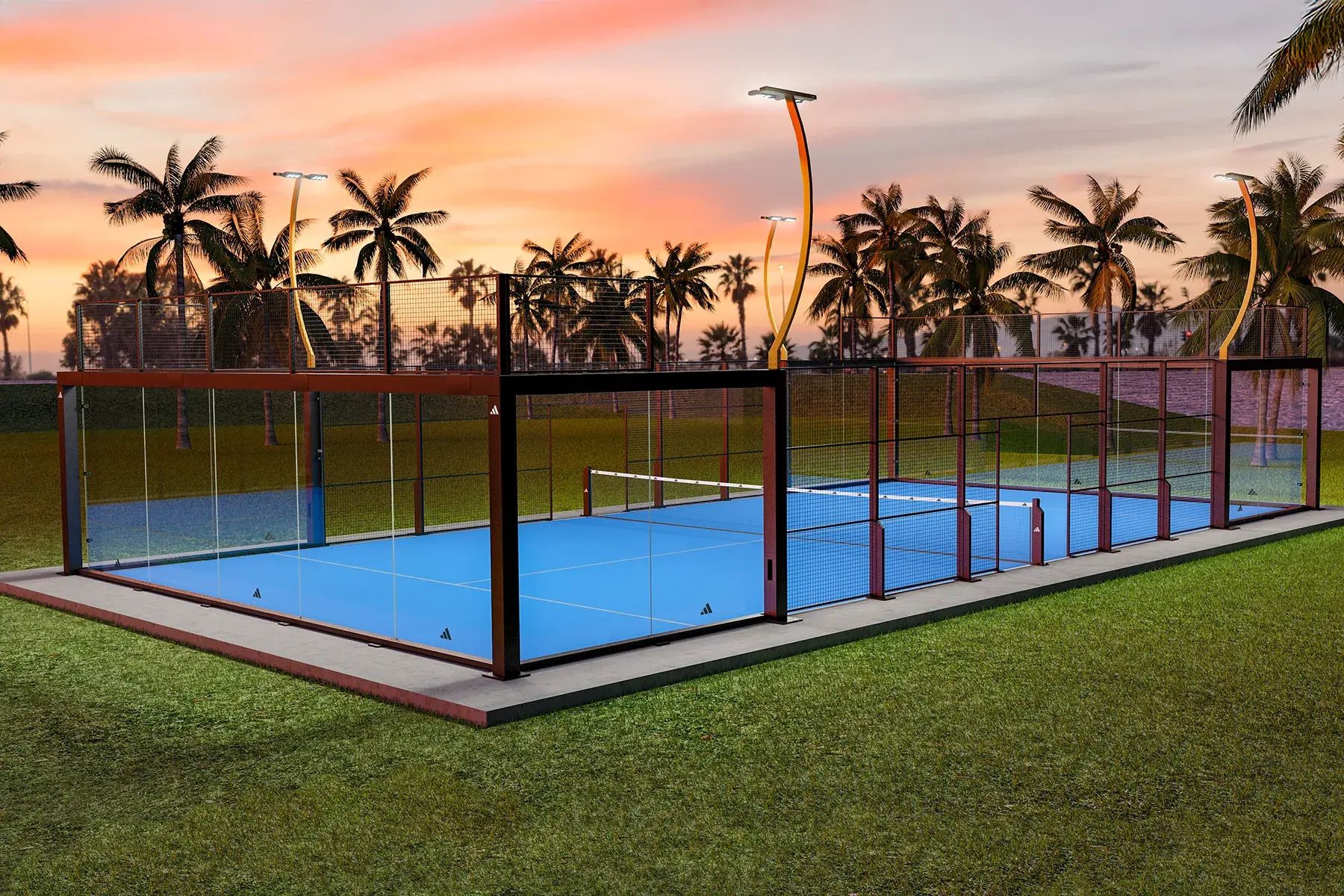
AFP Courts’ adidas 165 MPH, which is designed to offer wind speed resistance compliance. Image credit: AFP Courts.
Innovations in padel court surfaces
Padel court surfaces are also a focus of innovation. With most courts continuing to use artificial turf rather than hard surfaces, where humidity is on the rise in some countries due to increased moisture levels in the air thanks to higher temperatures, some padel court innovation focuses on improving turf quality and grip.
“AFP Courts’ proprietary high-quality sand has been specially formulated for humid conditions, reducing slipperiness while ensuring consistent ball bounce,” says Duval.
The sand acts as a protective barrier between the players’ feet and the court surface, improving grip, reducing wear and tear on the court and preventing the accumulation of moisture, and thereby the formation of fungi and other organisms that could damage the surface.
De Barutell says that among other focus areas for padel court innovation are durability in extreme climates, ensuring structures and coatings perform equally well in very humid coastal regions as in dry, high-UV environments, as well as making courts greener through energy efficiency, reducing both operating costs and environmental impact.
Another evolving factor is footwear adaptation. “As surfaces evolve, so do the shoes that interact with them,” says Duval, noting that brands like adidas have developed padel-specific footwear, engineered for padel play, meaning padel court designers once again need to collaborate constructively with other areas of the sport.
Not yet a PBM subscriber? Sign up here for exclusive insights into the padel industry, delivered directly to your inbox
For more insight and discussion, follow us on LinkedIn and join the conversation